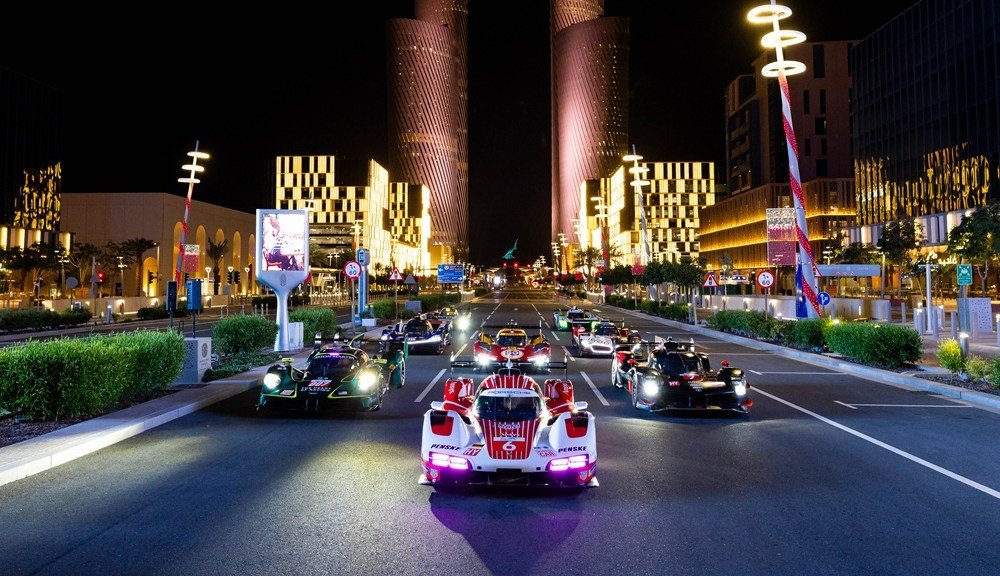The Current Thriving Era of Sports Car Racing
There has never been a more exciting time to be a fan of sports car racing. The current landscape is flourishing, with vibrant grids and an increasing fanbase eager for more as we dive into the third season of this spectacular era. The advent of the Le Mans Hypercar (LMH) and Le Mans Daytona h (LMDh) regulations has ushered in an unprecedented wave of manufacturer interest. Currently, ten manufacturers are actively involved in top-level competitions like the FIA World Endurance Championship (WEC) and the IMSA GTP categories, and several more, including iconic names like Ford, McLaren, and Genesis, are gearing up to join the ranks. The excitement surrounding these regulations is palpable, and the stability they provide seems to promise a bright future for sports car racing.
A Commitment to the Future of Regulations
The regulations governing sports car racing have exceeded expectations, with an anticipated extension of the Hypercar ruleset through to the end of 2031, announced around the time of the famous Le Mans 24 Hours race. This news has been positively received among stakeholders and teams alike. It grants manufacturers, including those who may have struggled like Peugeot with its 9X8 project, the reassurance to plan for the long term. Peugeot, despite its challenges, is committed to competing in the Hypercar category, possibly even with a new LMH-spec prototype on the horizon. This kind of commitment reflects a broader trend where manufacturers are encouraged to invest time and resources into developing competitive racing programs without the uncertainty of rapidly changing rules.
New Entrants on the Horizon
With the existing manufacturers feeling secure in the long-term landscape, discussions regarding potential new entrants have intensified. Sources indicate that several brands with a rich history in sports car racing are considering jumping into the fray, with at least one anticipated to enter as soon as 2027. This burgeoning interest is further bolstered by other manufacturers’ plans, such as BMW evaluating its IMSA GTP commitment and Genesis preparing to debut its GMR-001. Meanwhile, Acura is pushing for Honda’s involvement in the WEC, paving the way for potential strategic collaborations. However, space on the grid will soon become scarce, presenting challenges for newcomers and existing teams alike as the current structure becomes increasingly crowded.
Navigating Manufacturer Dynamics
While the future appears bright, certain challenges loom over the current manufacturers. As we look toward seasons four and five, there are still lingering doubts concerning the commitment of some existing brands. This uncertainty is compounded by the nature of factory programs, which typically last two to four years before reevaluation occurs. Additionally, a conversation has emerged around the idea of moving towards a single platform for racing. Companies like Porsche advocate for a streamlined approach that could reduce the costs associated with competition while maintaining manufacturer satisfaction. The question remains whether the evolving landscape will maintain balance, especially as a growing number of manufacturers potentially influence competitive fairness.
The Struggles for Privateers
Amid the excitement at the top level, there’s growing concern for privateer teams, which are finding it increasingly difficult to maintain financial viability in the face of escalating costs and a swelling number of factory teams. Teams like Proton and JDC-Miller have proven their mettle, but they face a daunting challenge as the sport becomes more resource-intensive. Responding to these concerns, the rule-makers continue to engage with stakeholders from both the WEC and IMSA to help refine the regulations. The consultations perhaps highlight a shared recognition that flexibility and proactivity are crucial in fostering a thriving competitive environment.
Adapting to Challenges and Future Growth
The ongoing adjustments, like the recent changes to the IMSA calendar, demonstrate that the authorities are listening and adapting. Though discussions about introducing additional races continue, current economic considerations weigh heavily on these decisions. Balancing growth with financial prudence is essential for sustaining long-term participation from teams of all shapes and sizes, especially struggling LMGT3 entrants. As the dust settles on the latest round of negotiations and plans, it is apparent that sports car racing stands poised to thrive, even amidst potential economic hurdles. As fans, we can look forward to this thrilling journey into the future, with the promise of engaging competition and innovation at every turn.


